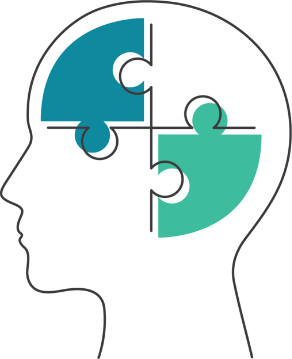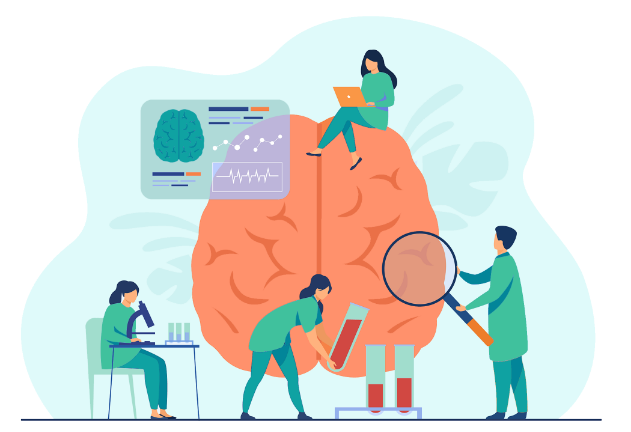There has been controversy 1,2,3,4 over the use of “brain games” in the medical field. Some scientists are still trying to debunk the efficacy of such programs in improving human cognition. This controversy arose because some companies have made claims that are not backed by science. For example, they may claim that their program can “reverse aging effects on the brain” or “can boost your brain function in minutes a day”. Of course, these statements have been found false by the government and these companies have retracted such statements. However, confusion and concern remain around whether digital cognitive software programs work. Therefore, you may ask, does HappyNeuron Pro work?
Any experience changes the brain. Neuroplasticity is the phenomenon of shaping neural circuits. We all have billions of neurons, which are connected and fire in unique patterns due to life experiences, such as schooling.

Cognitive rehabilitation therapy aims to improve cognitive function after impairments occur, often from disease or brain injury. Patients practice relevant cognitive tasks that may help strengthen connections between neurons and reestablish firing patterns that were once there but became impaired. To assist with cognitive therapy outside the clinic, a therapist may assign exercises via a digital platform. These exercises address functions that their patient has difficulty with. They can then review results and modify their treatment plan according to how their patient is progressing in care.
Experiencing an intervention does shape the brain, but the extent to which digital platforms do so on their own is still being investigated.
To date, there is not enough research to show an indisputable efficacy of Computerized Cognitive Remediation as a solo intervention. Researchers around the globe are doing further work to test such platforms, including HappyNeuron Pro. They are updating findings as they analyze and report data, and HappyNeuron Pro supports them as much as possible.

However, much evidence demonstrates the efficacy of cognitive remediation therapy and the use of digital platforms in the therapeutic process.
A meta-analysis by Grynzspan et al. has demonstrated the efficacy of computerized cognitive remediation tools in a review of relevant scientific studies regarding cognitive remediation. In their review, they have found benefits in using computer-assisted cognitive remediation (CACR) with regards to intervention of psychiatric conditions. In part, this is due to how these programs allow for multi-sensory stimulation, improved utility of therapy time, and increased motivation.
Other well-designed trials 1,2,3,4 have shown cognitive and functional benefits in Normal Aging and Psychiatry and meta-analyses 1,2,3,4 have confirmed the generality of these effects.
HappyNeuron Pro is designed to be a part of the therapy “toolkit” in conjunction with the therapist’s rehabilitation plan. Our platform complements what is being done during clinic hours and allows the patient to remain engaged, see progress, and focus on areas of concern.
Aside from practice alone, what makes therapy effective is bridging. This refers to the patient taking what is being practiced in therapy and applying it to their daily life. For example, they may utilize cognitive skills that they have practiced in their home and therapist’s office in a real-world situation, such as applying for jobs.
We cannot emphasize the importance of bridging enough. This is what makes any program successful. If your patient does not reflect and see how what they practice in therapy carries over into their everyday life, then the time spent in therapy may be wasted. The clinician must create opportunities for their patient to consider how their practice of cognitive skills can translate into their lives.

There are a variety of ways to do this, and each therapist or treatment team has their way. Resources such as Cognitive Remediation To Improve Functional Outcomes or Cognitive Remediation for Psychological Disorders: Second Edition describe in depth how to complete bridging. Additionally, this and similar resources describe how to set up a cognitive remediation program if needed.
In summary, HappyNeuron Pro does work together with therapy provided by a clinician. Your patient will get benefits if they can see, reflect, and understand how their care impacts their daily life. In addition, keeping your patient motivated and ensuring that they can overcome emotional obstacles as they occur will help them succeed.
If you want to know more about the controversy about computerized cognitive therapy, we recommend reading “Controversies in Computerized Training.” This clearly and extensively shows the efficacy of computerized cognitive therapy.
For more information on completed or ongoing studies using our programs, please check out our list of clinical studies.
If you are interested in conducting research, please contact us! We are always happy to support research as much as we can.
Learn more:

Info Page Title 1

Info Page Title 2

Info Page Title 3
Pulling from our decades of experience in Cognitive Therapeutics, we aim to help you enrich your practice through the use of digital and paper tools.
Pricing + Offers


© 2023 HappyNeuron is a Product of Humans Matter